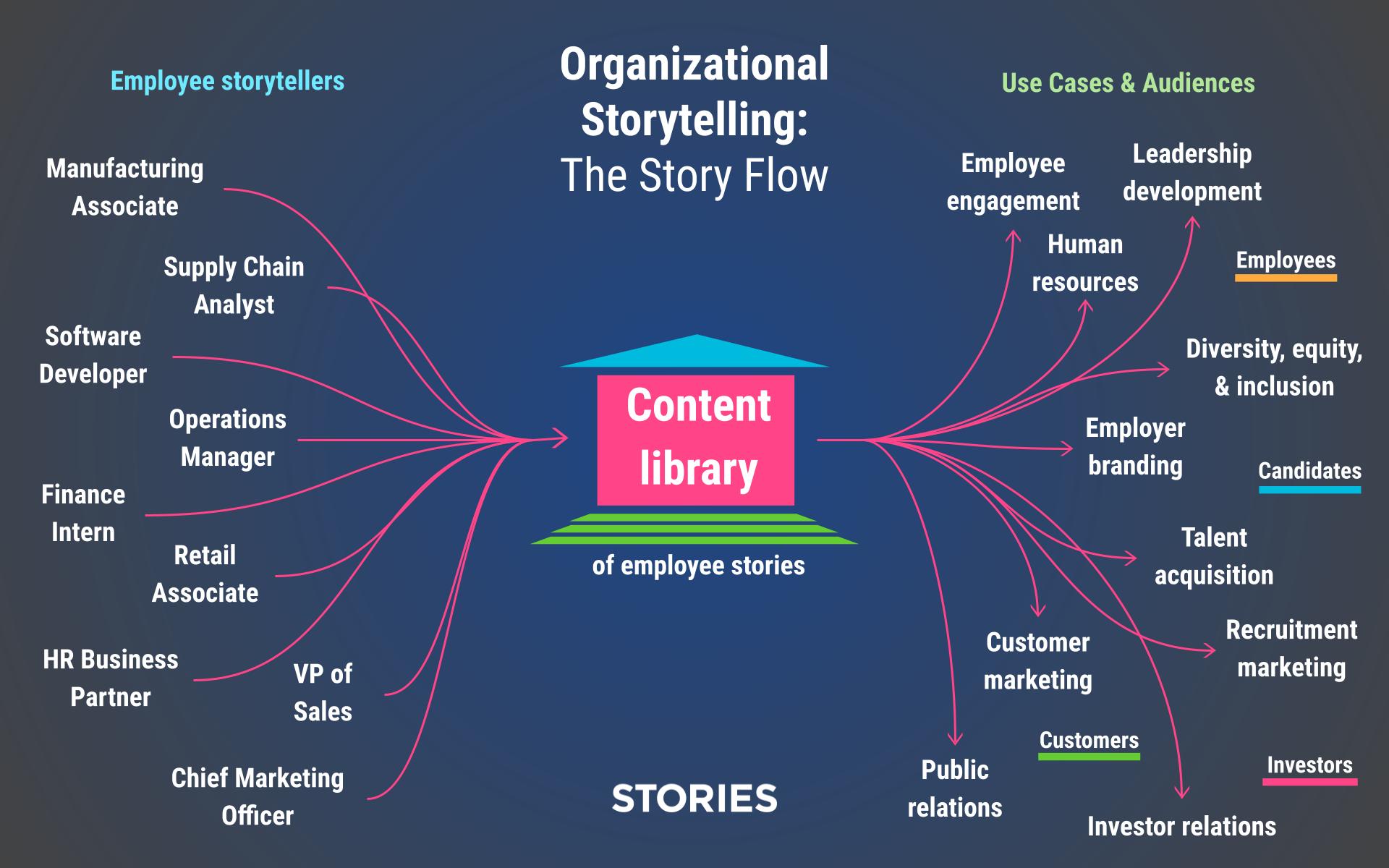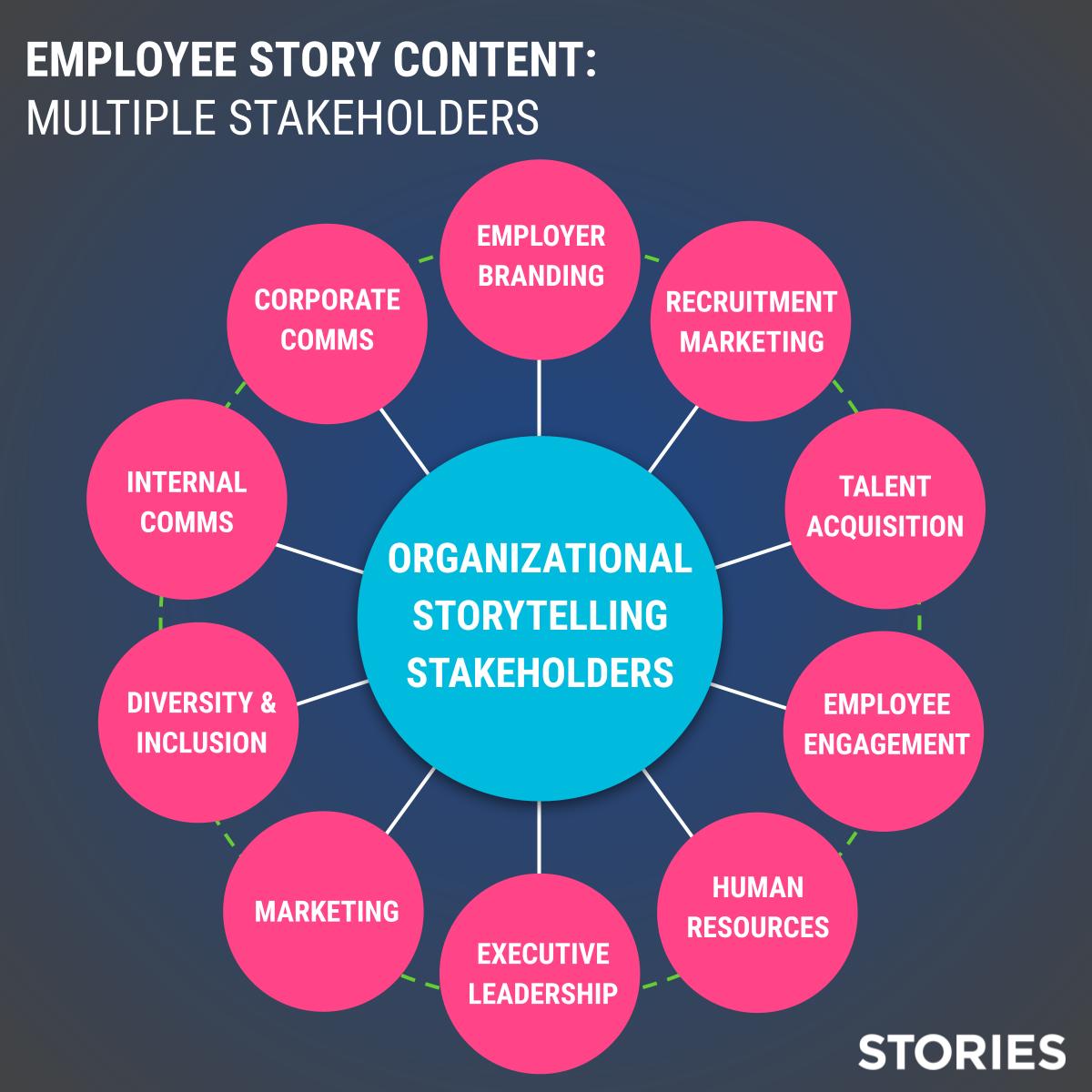What Is Organizational Storytelling?
This piece is an excerpt from our download, The Complete Guide to Organizational Storytelling.
Company cultures are always evolving. In the past two years alone, organizations needed to culturally adjust to a global pandemic, a national racial reckoning, industry talent shortages, and market fluctuations. As a result, some organizations have increased remote work and flexibility, doubled down on wellness initiatives, and made bigger investments in corporate diversity, equity, and inclusion (DEI), all of which impact the lives of their employees. And, that’s on top of cultural change that comes with new teammates, from natural team and leadership attrition and additions.
Ultimately, companies have had to reconcile, rethink and change how they’re supporting their employees…or deliberately choose to ignore it.
For companies who care about developing a unique culture and using it as a competitive advantage, organizational storytelling is one of your most important strategies.
Now is a good time to revisit not only who you are today, but also how you can optimize your story so it resonates with every audience who is invested in your culture: employees, candidates, customers, investors, alumni, and more.
What is Organizational Storytelling?
Organizational storytelling surfaces important cultural moments and corporate decisions that impact people, and uses those stories to engage the audiences interested in your culture. It defines who you are, and also identifies important moments that have built your culture. The output is media that both tells your overarching story and showcases important moments that bring your culture to life.
For the most real and authentic picture of your culture, organizational storytelling efforts must include a wide range of employees and leaders as storytellers. The specifics about their individual employee experience at your company are critical to create a realistic picture.
But organizational storytelling isn’t just one tagline, one defining story or one video. It’s a collection of employee experiences that are both weaved together to illustrate different themes and isolated to prove important points. Ultimately organizational storytelling results in a content library of employee stories that will be used across channels, to engage different audiences.
Multiple Stakeholders
From intern to executive, DEI to finance, It’s important to involve employee storytellers from all over your organization. You need a wide view of the employee experience, compiled from many perspectives. This is essential to your organizational storytelling efforts.
And, you must also engage key departments whose jobs rely on connecting with an audience, whether that’s employees, candidates, customers, investors, or all of the above.
Organizational storytelling strengthens these relationships by communicating culture correctly and consistently. Because these departments have a nuanced understanding of what resonates with their audiences, they will have ideas on cultural topics they’d like covered, as they know what resonates with their audience. And of course, the more champions you have to your organizational efforts, the better.
Download the full guide and learn all the different ways you can use organizational storytelling to your competitive advantage.
Get the Organizational Storytelling Guide



